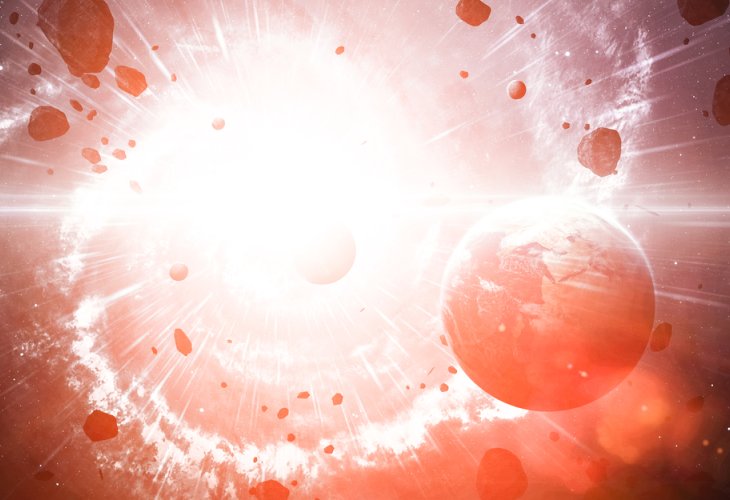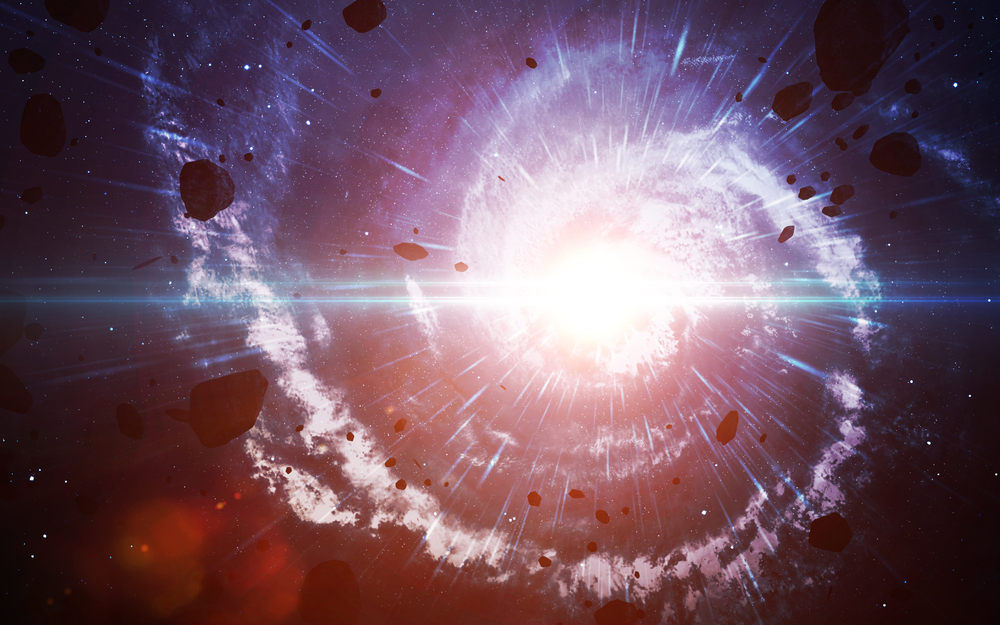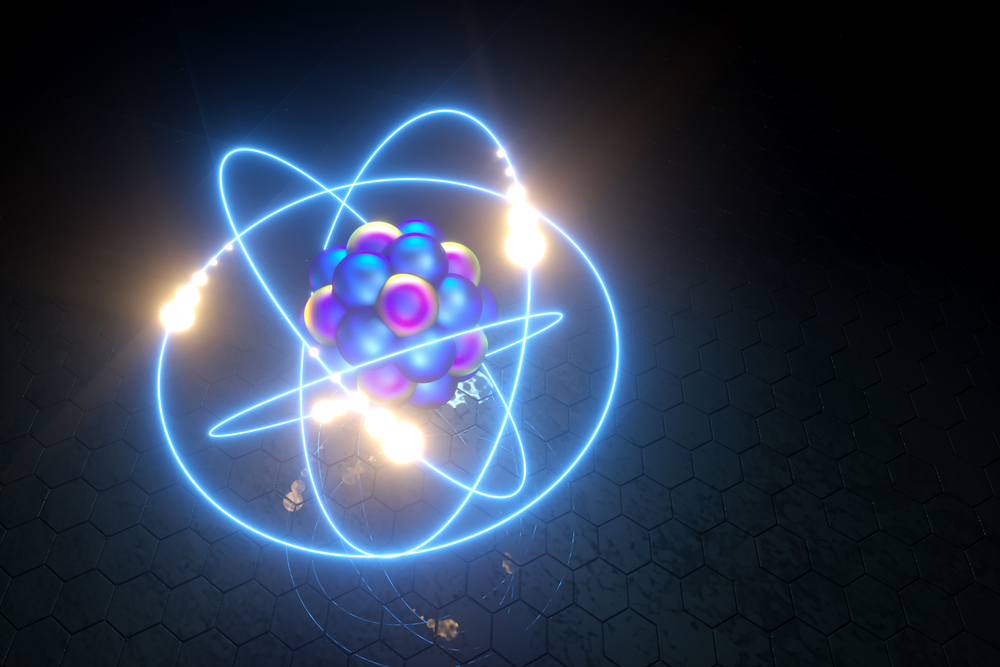In Search of God
The Big Bang and the Creator: How Modern Science Confirms the Torah’s Account of the Universe’s Beginning
From the expanding cosmos to the laws of nature, scientific discoveries echo ancient Jewish teachings that the universe was created from nothing, by an infinite, eternal, and intelligent Designer
 (Photo: shutterstock)
(Photo: shutterstock)
A hundred years ago, most scientists believed that the universe was infinite and eternal — that countless stars and galaxies existed in a vast, unchanging cosmos. This view, referred to as the “Steady State Theory” (or “Static Universe”), held that the universe had no beginning and no end.
That belief was shattered with the invention of the Hubble Space Telescope, named after the astronomer Edwin Hubble, who discovered that all galaxies are moving away from us.
This phenomenon, known as “redshift,” showed that the farther away a galaxy is, the faster it recedes — much like dots drawn on an inflating balloon that move apart as the balloon expands.
The conclusion was revolutionary: the universe is expanding, and it had a beginning when it was much smaller and denser than it is today.
The Moment of Creation
If the universe is expanding, it must once have been concentrated in a single point — what scientists refer to as the “singularity.” That point existed for less than a fraction of a second before expanding in a burst of light and energy now known as the Big Bang.
However, the Big Bang was not an explosion in space, but the rapid expansion of space itself from an unimaginably small and dense state, governed by precise mathematical laws: the strong and weak nuclear forces, electromagnetism, and gravity.
In essence, we are still living inside that expanding point. The entire universe was once smaller than a pinhead!
Further discoveries, such as cosmic background radiation, confirmed that the universe came into being from nothing, in a brilliant flash of light: “And there was light.” (Bereishit 1:3)
Long before modern science, the Torah and its sages described this very concept. Rashi explained that the first thing created was light.
The Ramban (Nachmanides) wrote that God created the universe from a concentrated “primordial matter,” from which all stars and galaxies were later formed. After thousands of years, modern science reached precisely the same conclusion.
As one scientist famously said, “It’s as if we climbed the mountain of knowledge, only to find a group of ancient scholars sitting there for centuries, waiting for us.”
What Came Before the Big Bang?
Science has proven that the universe had a definite beginning.
That means there was a time when no matter, no space, and no time existed — in simple terms, nothing at all.
Contrary to popular imagination, “nothing” does not mean darkness or empty space — because space itself did not yet exist. There was no color, no vacuum, and not even a place to put a pin.
Where there is no matter, there is no change, no cause, and no effect. Nothing is not merely emptiness — it is the total absence of existence. And from nothing, nothing can arise — unless there is a Creator beyond the universe itself.
 (Photo: shutterstock)
(Photo: shutterstock)The Scientific Case for a Creator
Beyond Matter and Energy:
Since before the universe there was no matter or energy, its Creator must be non-material and beyond physical laws, ie. supernatural.Beyond Space:
Since space itself began with the universe, the Creator cannot be confined to space. He is infinite, equally present everywhere without boundaries or divisions.Beyond Time:
Because time began with the universe, the Creator exists outside of it — eternal and unchanging, not bound by past, present, or future.All-Powerful:
The Creator brought all existence into being — He is therefore the source of all power.
Thus, the Big Bang itself — the moment of creation, is scientific evidence of a Creator. The universe had a beginning, and everything that begins must have a cause. That cause cannot be inside the universe — it must exist beyond space, time, and matter.
The first verse of Bereishit describes this perfectly: “In the beginning (the creation of time) God created the heavens (the creation of space) and the earth (the creation of matter and energy).”
Over 3,300 years before modern science, the Torah already stated that the universe began with the simultaneous creation of time, space, and matter.
What Is an Atom?
All matter in the universe is built from the same fundamental units — atoms. Different arrangements of these identical building blocks form different materials, like identical LEGO pieces used to make cars or towers.
Each atom consists of a nucleus made of protons and neutrons, surrounded by rapidly moving electrons. The nucleus is so small that, if the atom were the size of a football stadium, the nucleus would be a tiny ant at its center. Everything else — the space that seems solid, is just motion.
In reality, atoms are made mostly of energy fields in motion.
If all atomic movement were to stop for even an instant, the entire universe could fit into the size of a pea.
 (Photo: shutterstock)
(Photo: shutterstock)The Mystery of Natural Laws
Scientists describe the consistent behavior of matter as “laws of nature.” There are four known fundamental forces:
The strong and weak nuclear forces, which govern atomic structure.
The electromagnetic force, responsible for light, chemistry, and energy.
Gravity, the invisible pull that keeps the planets and stars together.
What are these laws, really? Science does not know. They are not mechanisms we can see — only patterns that repeat with mathematical precision.
As MIT President Charles M. Vest admitted in a 1995 report: “We do not understand what mechanism gives mass to the fundamental building blocks of matter.” Science has found order, but not its origin.
Evidence of Ongoing Divine Order
Even at this very moment, the universe’s structure depends on the continuous, precise activity of these forces. There is no rational reason they should keep working. Their ongoing operation — the very persistence of order, points to a sustaining intelligence behind the cosmos.
Like a computer that would instantly shut down without electricity, the universe exists only through the constant will of its Creator, who “renews in His goodness the work of creation every day.”
The laws of nature are not random; they create mathematical harmony, allowing for galaxies, planets, ecosystems, and life itself.
This order is not accidental, but reflects design.
As the prophet Yeshayahu wrote: “For thus says the Lord, the Creator of the heavens; He is God, who formed the earth and made it; He established it, He did not create it for chaos, but formed it to be inhabited — I am the Lord, and there is no other.” (Yeshayahu 45:18)

